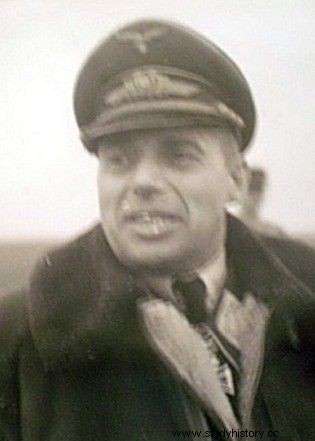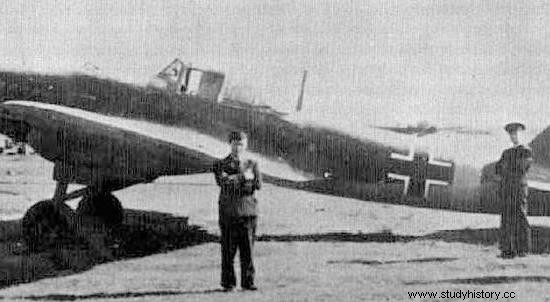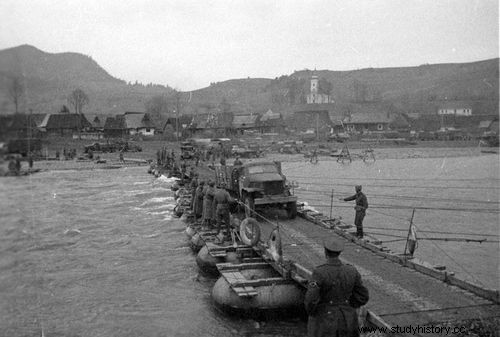Suicide attacks during World War II are undoubtedly the domain of Japanese airmen, but not only the country of the Rising Sun had suicide soldiers. The Luftwaffe also sent their men on mission of death. However, their targets were not enemy planes or ships, but ... bridges over the Oder.
In mid-April 1945, the fate of the war in Europe was definitely sealed. Over two and a half million Soviet soldiers were just getting ready to deal the final blow to the Third Reich. The Allies also recorded further successes on the Western Front. After all, Hitler demanded from his subordinates to fight until the very end. It was in such an atmosphere that the Luftwaffe's desperate plan was to destroy the Soviet crossings on the Oder.
The Luftwaffe takes an example from the Japanese
It was not about massive bombing, because the Germans did not have enough planes to carry out these, not to mention trained airmen. It was therefore decided that the pilots from the so-called "Leonidas" squadron (KG-200 "V") stationed in Jüterborg, they should follow the example of their Japanese colleagues.

General Major Robert Fuchs, it was he who commanded the grouping which included the squadron "Leonidas" (KG-200 "V") from which German suicide pilots were recruited.
As Antony Beevor states in his latest book, The Second World War: This type of suicide attack has been called Selbstopfereinsatz - "combat mission related to self-sacrifice" .
It should be added that before its start, the soldiers commanded by Lieutenant Colonel Heiner Lange were, according to some accounts, to sign a special declaration ending with the words:"I realize that this task will end with my death."
As already mentioned above, the purpose of the entire execution operation was to cross the Oder river. Specifically 32 " surface bridges", already built or under construction. The first attack was scheduled for the morning of April 17. The planes that were on hand were intended for its implementation. These included the Focke-Wulfy Fw 190, Messerschmitty Bf 109 and Junkers Ju 88.
Before, however, the pilots were sent to certain death, the group commander - Major General Robert Fuchs - made sure that they spent the last night playing. For this purpose, on April 16, a farewell dance was organized for them, to which girls from a nearby communications unit were invited. There was also some singing to cheer up the German "kamikaze".

The pilots of the squadron "Leonidas" (KG-200 "V") are standing next to the captured Soviet Il-2 attack plane. Perhaps in April 1945 one of them became Hitler's kamikaze.
The action went according to plan and at first it didn't seem to be bad. For example, a Focke-Wulf with a 500 kg bomb, piloted by Ernst Reichl, destroyed the pontoon bridge in Zellin.
Little effects and big losses

However, as Antony Beevor notes in his book "Berlin 1945. The Fall": German reports of the destruction of 17 crossings over the next three days seem to be greatly exaggerated. So what were the effects of the attacks? It's hard to say, but according to the British historian, the Germans certainly managed to destroy at least one more crossing - the railway bridge near Kostrzyn.
The price for these local successes was way too high. The Germans lost as many as 35 experienced pilots. Of course, as many machines had crashed. It was a serious weakness for the - chasing after the last - Luftwaffe.
Meanwhile, undaunted by this fact, General Fuchs sent the names of the fallen to the Führer for his upcoming fiftieth birthday . He probably thought that such a gift would please the leader of the "Thousand-year-old Reich" hidden in a bunker under the Reich Chancellery.
Probably the suicide attacks would not have ended on April 20 and more German suicide pilots would have died, but the insane action soon ceased. German plans were thwarted by the Soviet offensive.

Among other things, such pontoon bridges were the target of suicide pilots from the squadron "Leonidas" (KG-200 "V"), commanded by Lieutenant Colonel Heiner Lange.
Specifically, the 4th Guards Tank Army of Colonel General Dmitry Lhatenko, which unexpectedly began approaching Berlin from the southeast, threatening the airport in Jüterborg. This is how the Red Army saved the German airmen from suicide.
